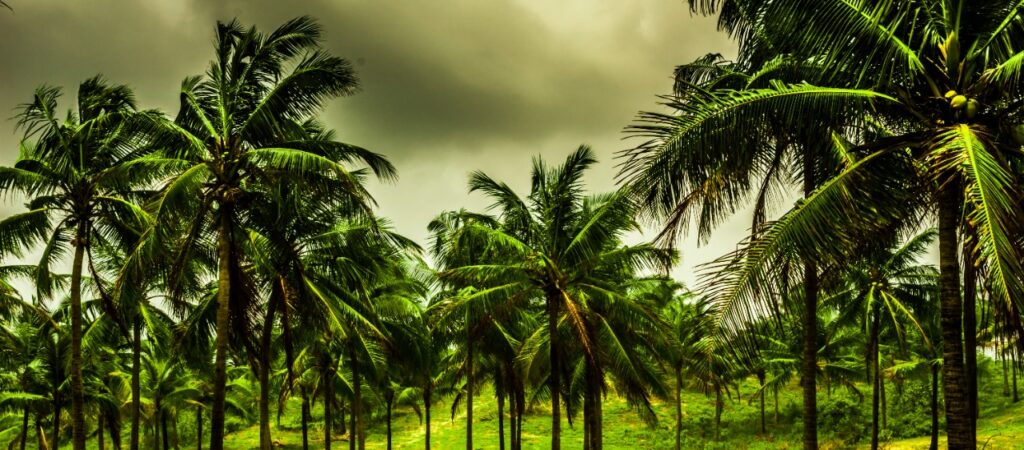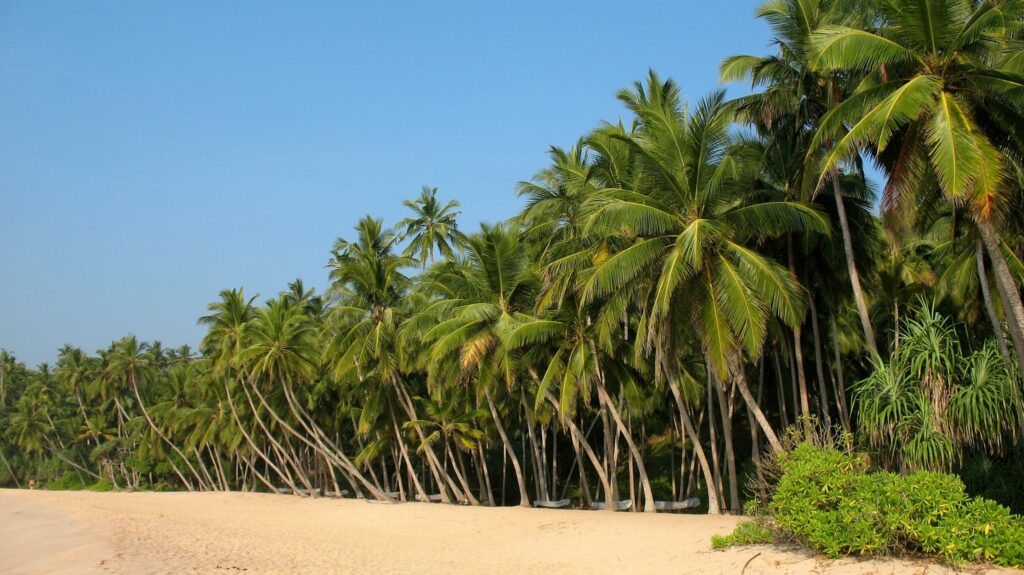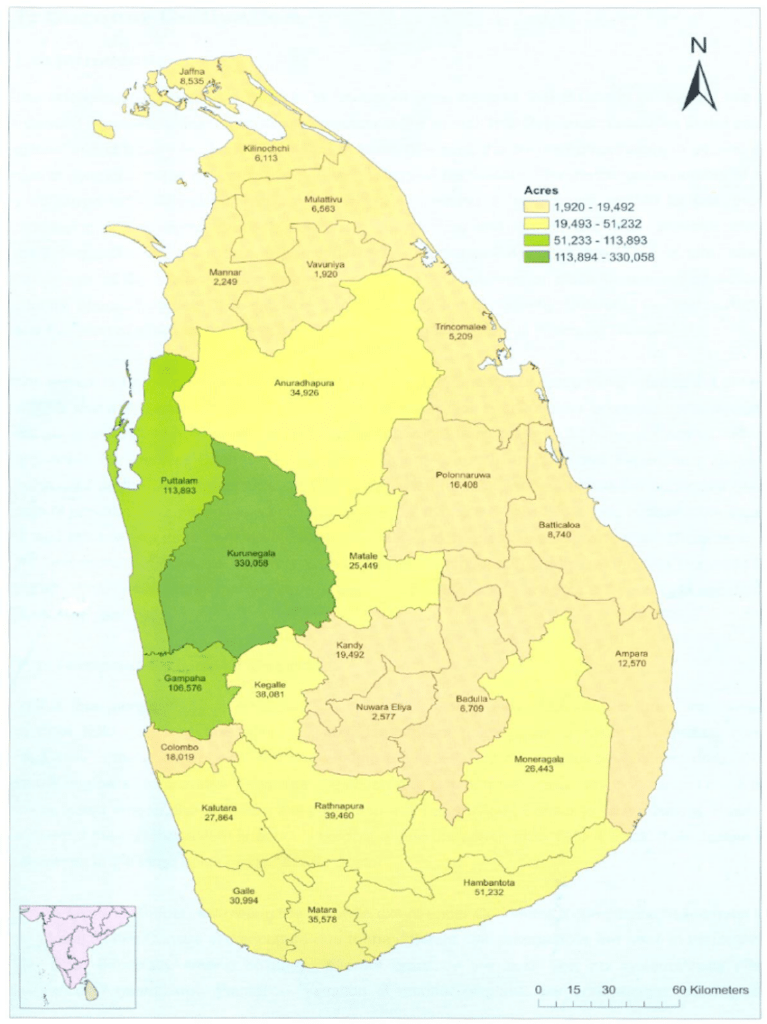
History of Coconut
History of Coconut
The Ramayana and Sri Lanka chronicles provide literary evidence that coconuts, technically known as Cocos Nucifera, existed in the coastal areas of Sri Lanka even before the 1st century BCE.
In the post-Anuradhapura period, coconut plantations expanded along the Sri Lankan beaches from Chilaw to Matara. King Parakramabahu VI gave a coconut plantation to the Thotagamuwe Vijayaba Pirivena in the 15th century. In the 16th century, Spanish and Portuguese explorers originated the term “coconut.”
Although the Portuguese were interested in arrack, a native drink produced from coconut blossom sap, at the commencement of the colonial era, they were not interested in other palm goods. As a result, they overlooked coconut estates.
Coconuts have historically played an essential economic, cultural, and political significance in the lives of Sri Lankans, colonial predecessors, and trading partners. Aside from that, the coconut tree and the goods derived from it have a strong connection with the Sri Lankan way of life. As a result, coconuts are used in a variety of delicious Sri Lankan recipes. There are three types of coconut trees in Sri Lanka: tall coconut trees, dwarf coconut trees, and King coconut trees. Coconut is indigenous to South East Asia and Sri Lanka. In many respects, the usage of every component of the tree provided tremendous value to coconut trees.
Do Coconuts Grow in Sri Lanka?
Sri Lanka is one of the five leading countries where coconuts cultivation first started. The plains in Sri Lanka have the best soil and the weather required for the growth of coconut. It is the salty and sandy soil that is the best medium for the coconut plantation. Sri Lanka is an island rich with such soil around the coasts of the island. If you travel down south of the island, you could have the beautiful view of the bluish beaches of Sri Lanka beautified with the coconut palms leaning towards the beach! Thus, coconut became one of the principal commercial crops in Sri Lanka after identifying its goodness and value.
There are three main varieties of coconut that grow here. The tall variety is the standard variety, dwarf variety, and the King coconut variety are the rest. Coconuts,
in general, are called ‘Pol” in Sri Lanka, where King coconut is called “Thambili. All these varieties contribute to the success of the coconut industry of Sri Lanka.
Coconut Cultivation of Sri Lanka
Coconut cultivation in Sri Lanka is one of the main crops that support the country’s economy in big time. The cultivation, processing, marketing, and exporting of this valuable crop have created many jobs in the field, Sri Lanka secures a fifth place among the world’s largest coconut producers. Furthermore, coconut cultivation in Sri Lanka covers more than 12% of the agriculture production on the island. There is an average coconut production of 3600 million nuts annually. The Coconut Development Act, No 46 of 1971, governs the coconut industry in Sri Lanka supported by many other government organizations. Let’s have a complete overview of further details concerning coconut cultivation in Sri Lanka right now.

Coconut Cultivation Areas in Sri Lanka
Although coconut is one of the main crops of Sri Lanka, there are certain areas of the country that are ideal for coconut plantation especially, as a commercial crop. Generally, the western and Southern lowlands have coconut estates where they grow healthy coconuts. However, there is a particular area in this country that contains the best of the best soil for coconut plantations. That specific area is known as the ‘coconut triangle in Sri Lanka.
.
What is the Coconut Triangle in Sri Lanka?
Sri Lanka is one of the leading countries to grow coconut; a particular area is famous for coconut cultivation. The said area covers three districts on the island, which is around sixty-six percent of the total acreage of Sri Lanka. Besides, this particular area is internationally popular as the largest coconut production area in South Asia. The districts include Colombo, Kurunegala, and Puttalam. The reason for the name ‘coconut triangle’ is the geographical position of these three districts on the Sri Lankan map. The specialty of this area is the climate which belongs to the dry and intermediate climatic zones that ideally fit the coconut plantation. Anyone who passes these areas can have a beautiful, greenish and unique view of vast and well-maintained coconut estates on the roadsides.
The coconut estates in this area are well looked after with manure and water with other minerals at the correct time to the right amount. Although the rainfall in the coconut triangle is not relatively frequent, irrigation systems provide the necessary water supply. The result is a very well grown and nutritious harvest of coconuts once each three months during the year. The total annual coconut production in the coconut triangle is approximately three thousand million nuts, among which Sri Lanka exports 200 million.
